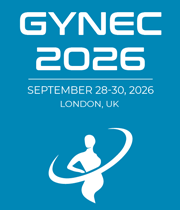Title : Timing of laparoscopic ovarian cystectomy and ovarian reserve markers: A systematic review and meta-analysis
Abstract:
Background: Laparoscopic ovarian cystectomy is a well-established treatment for benign ovarian cysts in women of reproductive age. However, surgical intervention may affect ovarian reserve by disrupting ovarian tissue or vascularization. Increasing attention has focused on whether the timing of surgery within the menstrual cycle (follicular versus luteal phase) influences postoperative ovarian reserve, as cyclical hormonal changes affect haemostasis and ovarian blood flow.
Objective: To evaluate, through meta-analysis, the effect of surgical timing (luteal versus follicular phase) of laparoscopic ovarian cystectomy on postoperative ovarian reserve markers in reproductive-age women with benign ovarian cysts.
Methods: A systematic search of MEDLINE, Embase and Cochrane Library was conducted from inception to July 2025. The primary outcome was serum anti-Müllerian hormone (AMH) measured preoperatively and postoperatively (absolute values and percentage change). Meta-analyses were performed using RevMan (Version 9.10.0) with mean difference (MD) and 95% confidence interval (CI) for all outcomes. Heterogeneity was assessed using I² statistic.
Results: Three studies comprising 298 women were included. Laparoscopic ovarian cystectomy was performed in the follicular phase in 156 (52.34%) patients. Postoperative AMH levels were measured at 3 months in 155 (52,01%) patients and at 6 months in the remainder. Most cysts were unilateral (265, 88.92%), with endometriomas being the most common pathology (238, 79.86%). Preoperative AMH levels did not differ significantly between groups (MD -0.01 ng/mL; 95% CI -0.58 to 0.57 ng/mL; p = 0.98; I2 = 0%). Compared with the luteal phase, surgery performed in the follicular phase was associated with a significantly smaller percentage decrease in AMH (MD 9.06%; 95% CI 0.39 to 17.74%; p = 0.04; I2 = 70%). No significant differences were observed between phases for postoperative AMH absolute levels (MD -0.46 ng/mL; 95% CI -0.98 to 0.05 ng/mL; p = 0.08; I2 = 12%), operation time (MD 2.32 min; 95% CI -0.97 to 5.61 min; p = 0.17; I2 = 0%), or intraoperative blood loss (MD -2.28 mL; 95% CI -6.19 to 1.62 mL; p = 0.25; I2 = 0%).
Conclusion: In reproductive-age women undergoing laparoscopic ovarian cystectomy for benign cysts, the timing of the surgery within the menstrual cycle (follicular versus luteal phase) may influence postoperative ovarian reserve markers. Larger, high-quality studies are needed to confirm these findings and to determine the optimal timing of surgery to preserve ovarian reserve.




